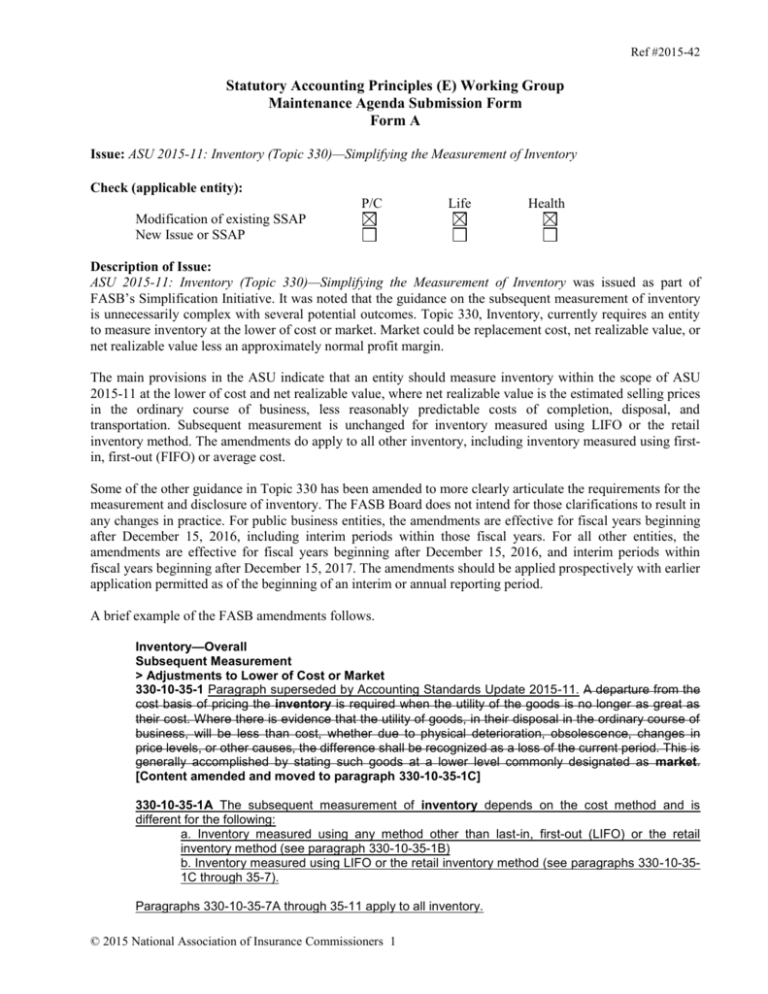


However, the Board decided that aligning those models would require a broader, longer term effort that would extend beyond the issues raised in the agenda request. In making that decision, the Board acknowledged the different accounting models and outcomes between transactions involving a collaborative arrangement as defined in Topic 808 and those involving a separate legal entity with similar characteristics. The Board rejected including within the scope of this project collaborative-type arrangements structured in a separate legal entity. In the pre-agenda research phase, the Board considered including both collaborative arrangements within the scope of Topic 808 and arrangements with similar economics that are structured in a separate legal entity. At various stages in developing the amendments in this Update, the Board considered the project’s scope.
NOVEMBER 11 2015 FASB UPDATE
The amendments in the proposed Update made the following targeted improvements: On April 26, 2018, the FASB issued a proposed Accounting Standards Update, Collaborative Arrangements (Topic 808): Targeted Improvements, with comments due on June 11, 2018. Require that in a transaction with a collaborative arrangement participant that is not directly related to sales to third parties, presenting the transaction together with revenue recognized under Topic 606 is precluded if the collaborative arrangement participant is not a customer.īC8.Add unit-of-account guidance in Topic 808 to align with the guidance in Topic 606 (that is, a distinct good or service) when an entity is assessing whether the collaborative arrangement or a part of the arrangement is within the scope of Topic 606.Clarify that certain transactions between collaborative arrangement participants should be accounted for as revenue under Topic 606 when the collaborative arrangement participant is a customer in the context of a unit of account.


The amendments in this Update make targeted improvements to generally accepted accounting principles (GAAP) for collaborative arrangements as follows: Those accounting differences result in diversity in practice on how entities account for transactions on the basis of their view of the economics of the collaborative arrangement. Some entities apply revenue guidance directly or by analogy to all or part of their arrangements, and others apply a different accounting method as an accounting policy. Topic 808 does not provide comprehensive recognition or measurement guidance for collaborative arrangements, and the accounting for those arrangements is often based on an analogy to other accounting literature or an accounting policy election. A collaborative arrangement, as defined by the guidance in Topic 808, is a contractual arrangement under which two or more parties actively participate in a joint operating activity and are exposed to significant risks and rewards that depend on the activity’s commercial success. The FASB is issuing this Update to clarify the interaction between Topic 808, Collaborative Arrangements, and Topic 606, Revenue from Contracts with Customers. Transfers and servicing of financial assets Revenue from contracts with customers (ASC 606) Loans and investments (post ASU 2016-13 and ASC 326) Investments in debt and equity securities (pre ASU 2016-13) Insurance contracts for insurance entities (pre ASU 2018-12) Insurance contracts for insurance entities (post ASU 2018-12) IFRS and US GAAP: Similarities and differences Business combinations and noncontrolling interestsĮquity method investments and joint ventures


 0 kommentar(er)
0 kommentar(er)
